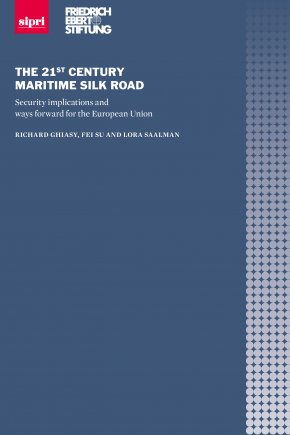The 21st Century Maritime Silk Road: Security Implications and Ways Forward for the European Union
The policy report The 21st Century Maritime Silk Road: Security Implications and Ways Forward for the European Union presents an analysis of the sea-based component of the Belt and Road Initiative (BRI), the Road. The report complements the February 2017 SIPRI–Friedrich-Ebert-Stiftung publication on the land-based component of the BRI, the Belt. The previous report examined security implications in two of the strategic terrestrial regions that the Belt traverses: Central Asia and South Asia. In turn, this report examines security implications in the two strategic maritime spaces that it crosses: the South China Sea (SCS) and the Indian Ocean Region (IOR). Special consideration is given to how the Road might affect the interests of European Union (EU) and how the EU could consider responding. The findings are also highly relevant to the Road’s non-EU stakeholders.
1. The Maritime Silk Road
1.1. Scope and strategic evolution
1.2. Exploring China’s aspirations
2. The Maritime Silk Road: Security implications
2.1. Security implications for the South China Sea
2.2. Security Implications for the Indian Ocean Region
3. The Maritime Silk Road: Prospects for European Union security cooperation
3.1. Compatibility with European Union maritime security interests
3.2. Ways forward for the European Union
Annex I. Abbreviations



